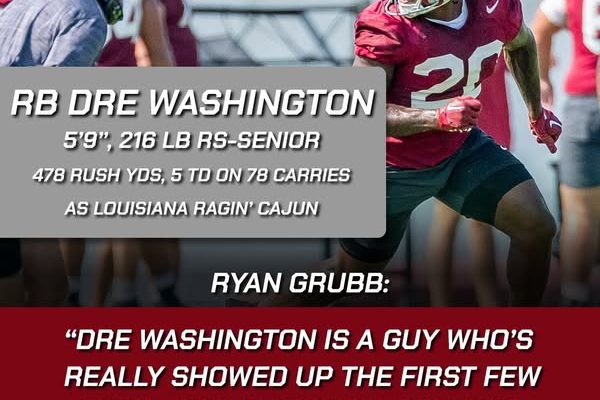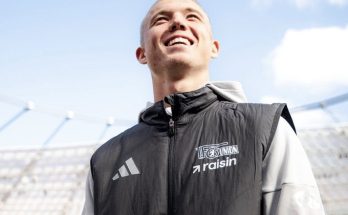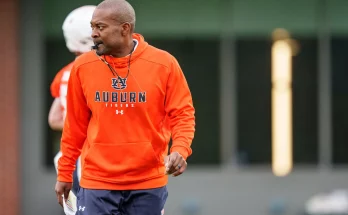Jam Miller Goes Down in Scrimmage — Tide Turns to Young Backs to Carry the Load
When Alabama running back Jam Miller went down with an upper-body injury during the Crimson Tide’s second fall scrimmage on Saturday, it didn’t just shake the backfield depth chart — it sent a ripple through the entire offense. With Miller undergoing a procedure the same evening and now expected to miss the season opener against Florida State, the Tide are forced to turn to their next wave of runners, hoping the talent they’ve stacked behind Miller is ready for primetime.
Miller wasn’t just another body in the backfield. He was expected to be a central figure in Alabama’s offense this season, both on the ground and as a reliable option in the passing game. He rushed for 668 yards and seven touchdowns last year, but what made him especially valuable in 2025 was his development as a pass-catcher and pass protector. With a relatively inexperienced quarterback in Ty Simpson set to take the reins, Miller’s presence offered a sense of stability. Now, that comfort blanket is gone — at least for the start of the season — and the pressure shifts to the younger backs who must step in and keep the Tide’s offense rolling.
The most obvious name to watch in Miller’s absence is Richard Young. The redshirt sophomore saw limited action last year but showed enough to give coaches confidence. On just 27 carries, Young posted 146 yards and two touchdowns. He’s powerful, decisive, and has taken a noticeable step forward in his physicality and patience during fall camp. Young has also spent time refining his pass protection skills — an area he admitted was a learning curve last season. In a system that will rely heavily on protecting a first-year starting quarterback, that improvement could prove critical.
But Young isn’t alone. Sophomore Daniel Hill has arguably made the most noise during fall camp. At 6-foot-1 and 244 pounds, Hill is a physical anomaly — a big-bodied bruiser who somehow moves like a back 20 pounds lighter. Coaches and teammates alike have raved about his vision, balance, and surprising quickness. His power running style invites comparisons to former Alabama great Derrick Henry, and while that might seem premature, the early signs are promising. What’s more impressive is Hill’s development as a receiving threat. Despite his size, he’s shown soft hands and an ability to create mismatches against linebackers in space. If Hill can be a three-down option, his role could grow even beyond what Miller was expected to handle.
Then there’s Dre Washington, the Louisiana transfer who brings the most experience of the bunch. Washington rushed for 478 yards and five touchdowns last season and has the look of a veteran who’s already played big-time snaps. He’s not the flashiest back in the room, but he’s reliable, smart, and consistent — three things that will matter immensely when Alabama lines up against a top-five opponent in Florida State in just under two weeks. Washington has quickly built trust with the coaching staff and offers the kind of steady presence that helps smooth transitions during moments of unexpected change like this one.
Offensive coordinator Ryan Grubb now faces a crucial task: reshuffling the run game and adapting the offensive plan without Miller. Grubb has said publicly that while each back brings a different style to the table, he’s confident the group can operate as a cohesive committee. That committee approach might not be a bad thing, especially early in the season. Having three viable options in Young, Hill, and Washington allows Alabama to play the hot hand, keep fresh legs on the field, and create matchup problems for opposing defenses. It also keeps the pressure off any one player to do too much too soon — a luxury not all teams have when their starting back goes down.
Still, this isn’t just about who can rack up the most rushing yards. Miller’s absence leaves a void in leadership, communication, and situational awareness. He was an extension of the coaching staff on the field — able to recognize blitzes, adjust protections, and bail out the quarterback on broken plays. The coaching staff will be watching closely to see which of the younger backs can take on some of those responsibilities, especially in the heat of a nationally televised showdown to open the season.
It’s worth noting that Alabama’s offensive line will play a huge role in how successful this running back rotation turns out to be. The unit is expected to be a strength this season, and it will need to be. Clear lanes and consistent protection will give the backs confidence and allow Grubb to call a more balanced game plan. The last thing Alabama wants is to become one-dimensional in Simpson’s first start, especially against a Florida State defense that thrives on pressure and turnovers.
There are a couple of wildcard names that could also factor in. True freshmen AK Dear and Kevin Riley have both had their moments in fall camp, though neither is likely to be featured heavily right out of the gate. That said, injuries and depth concerns have a way of accelerating timelines in college football. If either flashes in practice over the next two weeks, they could find themselves getting meaningful touches sooner than expected. For now, though, the plan seems to revolve around the trio of Young, Hill, and Washington.
This is a pivotal moment for Alabama’s offense. A team that already had questions about how it would transition under new leadership is now being tested before it’s played a single down. But that’s also part of the Crimson Tide’s identity — next man up, always. For the better part of two decades, Alabama has built itself on depth, preparation, and execution. Losing Jam Miller is a blow, no doubt. But how the team responds will say just as much about its identity as anything else.
The silver lining? Miller is expected to make a full recovery. Barring setbacks, he should be available for the bulk of the season, though his timeline remains unofficial. That means Alabama’s young backs don’t have to carry the load forever — just long enough to keep the team afloat and the offense functional until its leader returns. In that sense, this moment becomes an opportunity — not just a challenge.
So while the headlines are right to focus on Miller’s injury, the real story is what happens next. Can Young rise to the occasion and become the player many projected him to be coming out of high school? Can Hill turn his eye-popping potential into consistent production? Can Washington be the stabilizing force that holds the room together until the cavalry returns?
The answers to those questions will begin to take shape on August 30. Until then, the backfield is on watch — and for Alabama, that’s exactly the kind of drama that often precedes something special.



